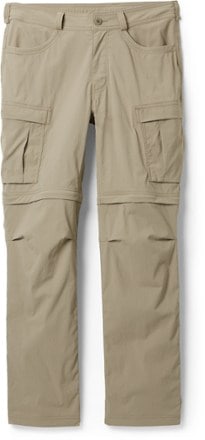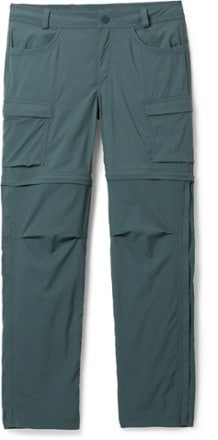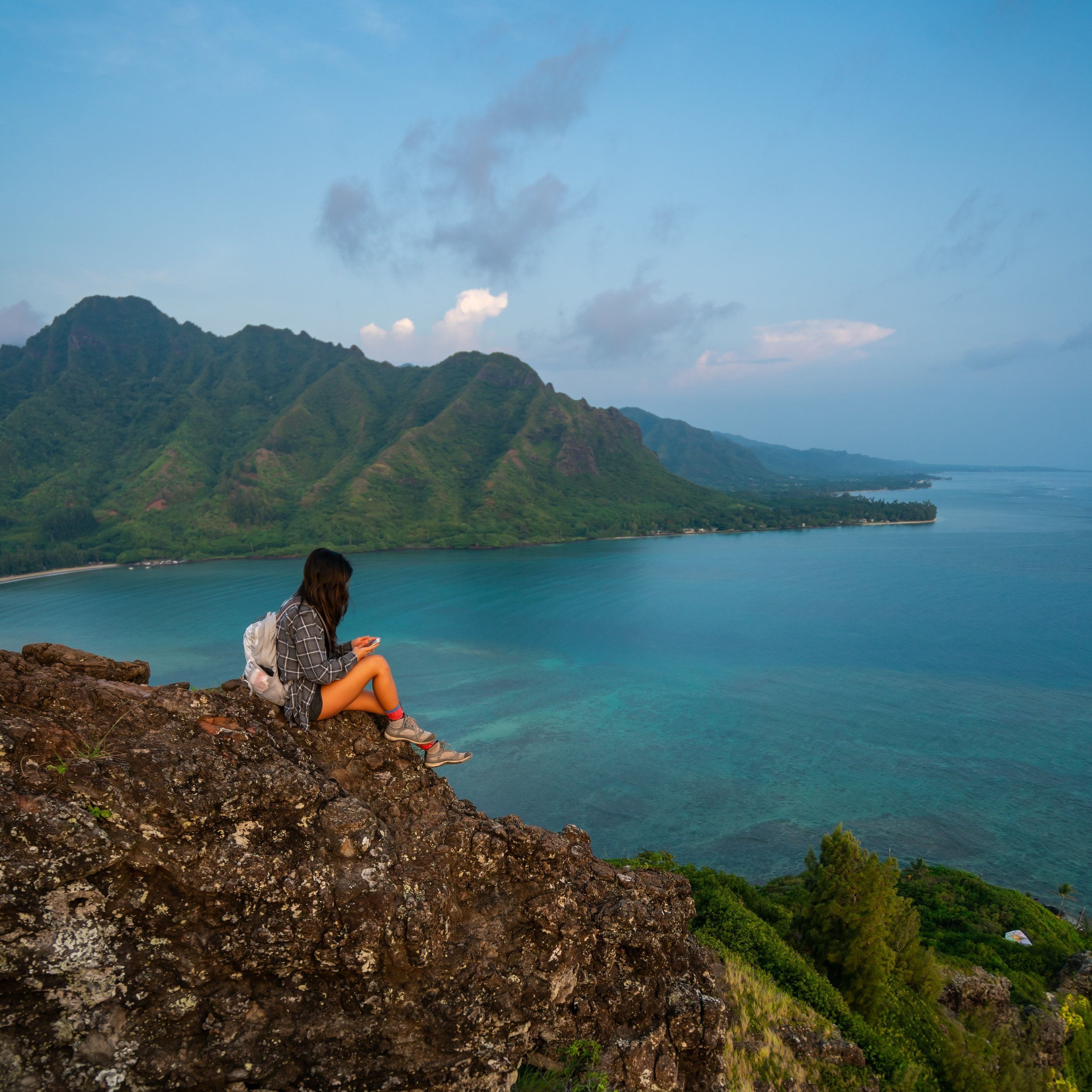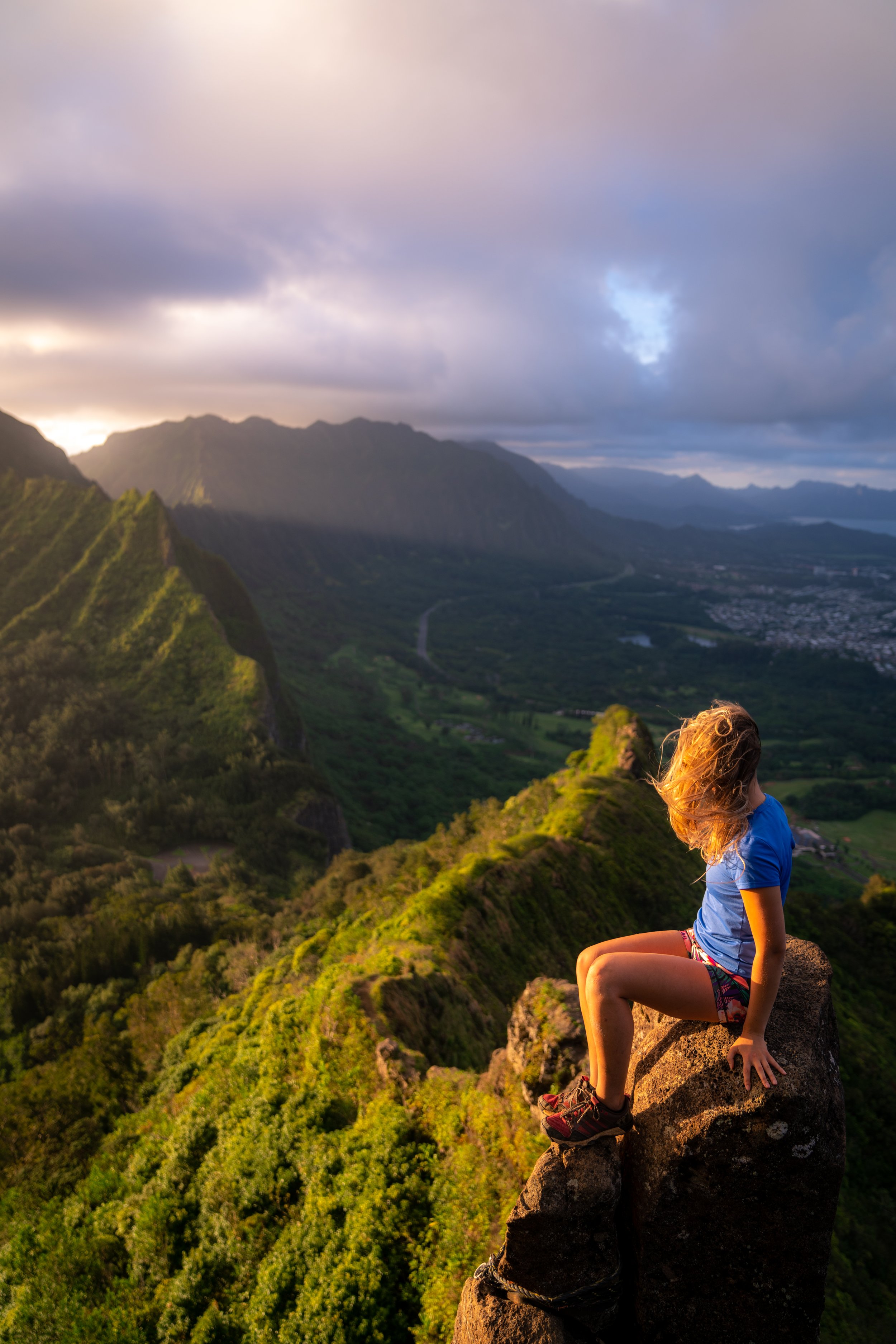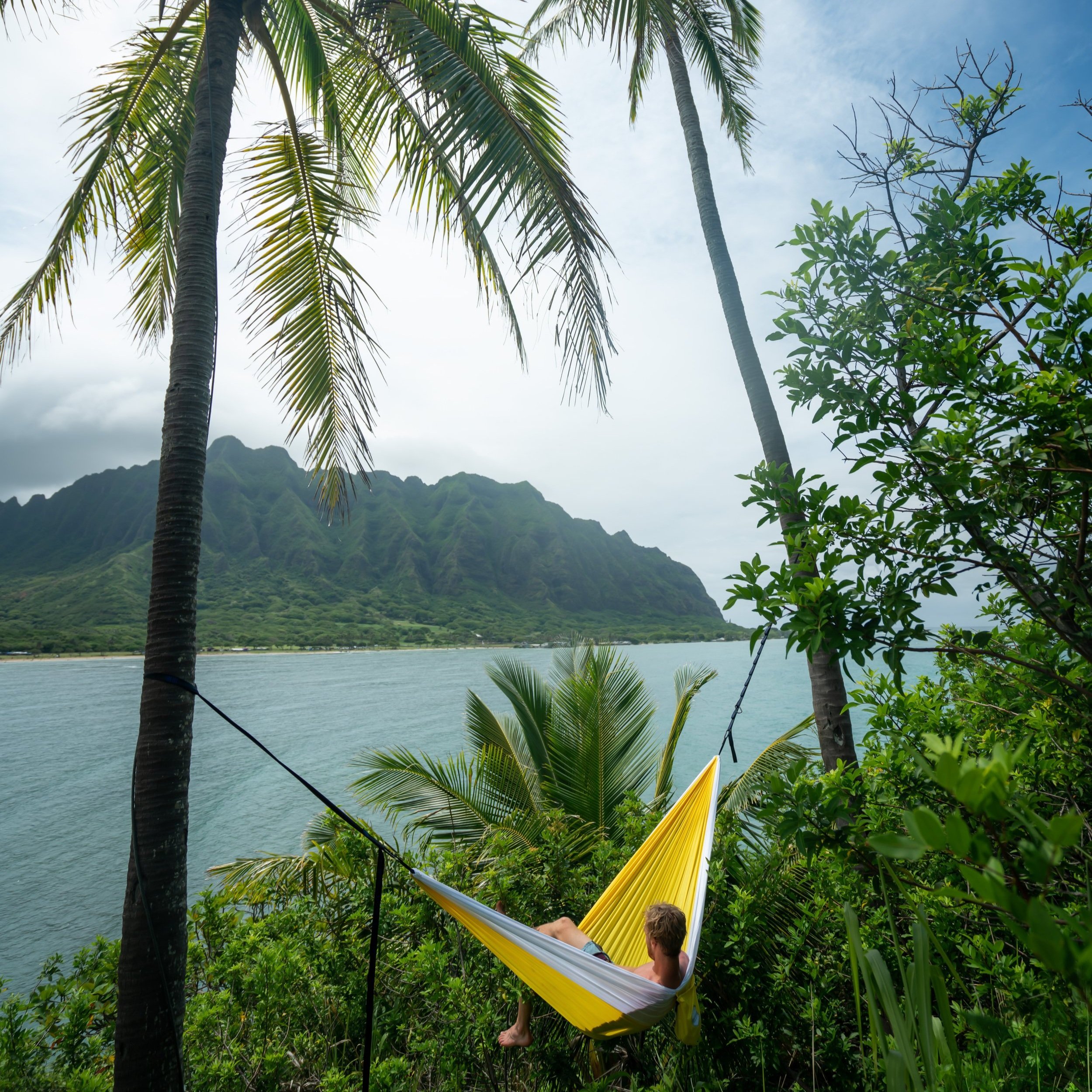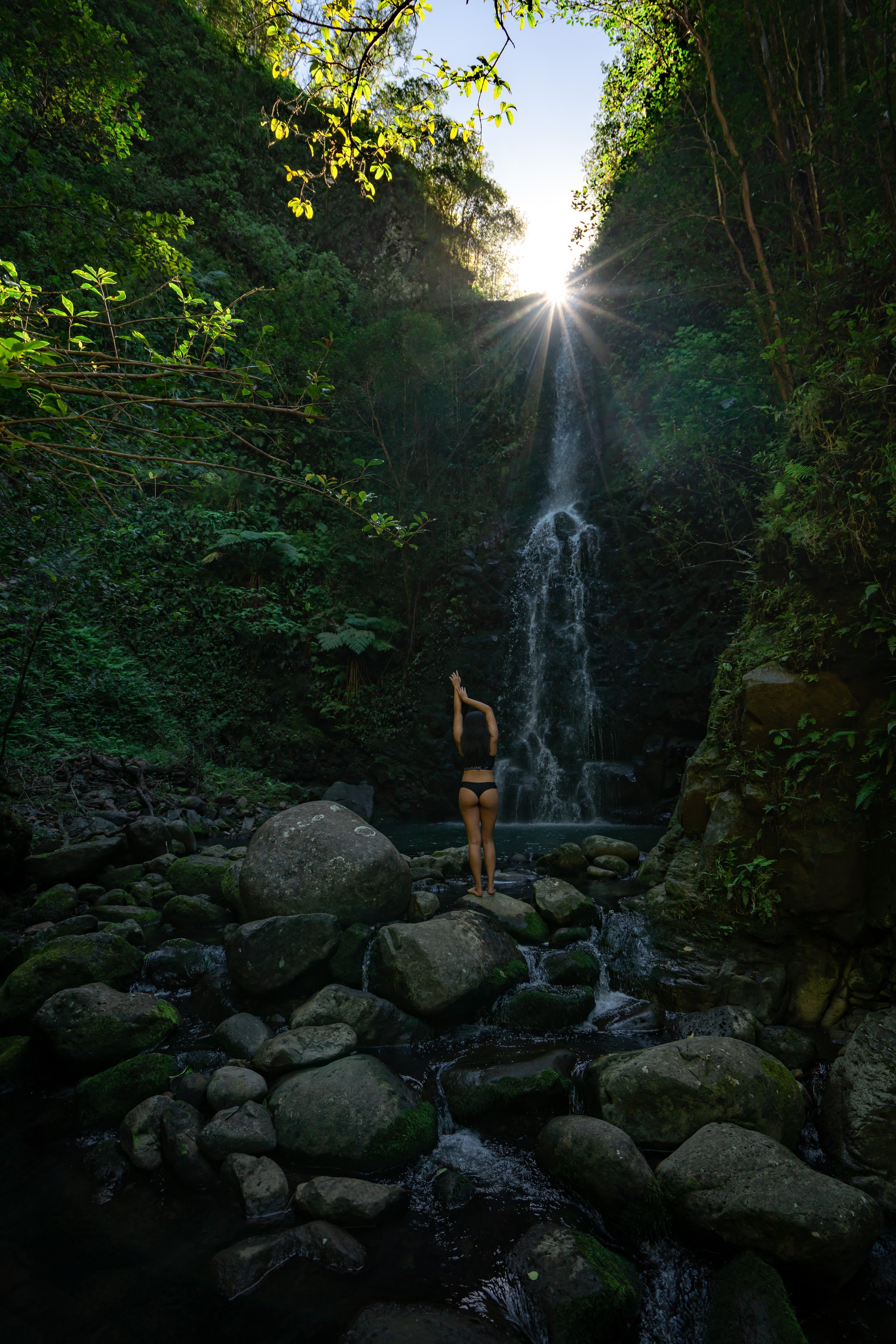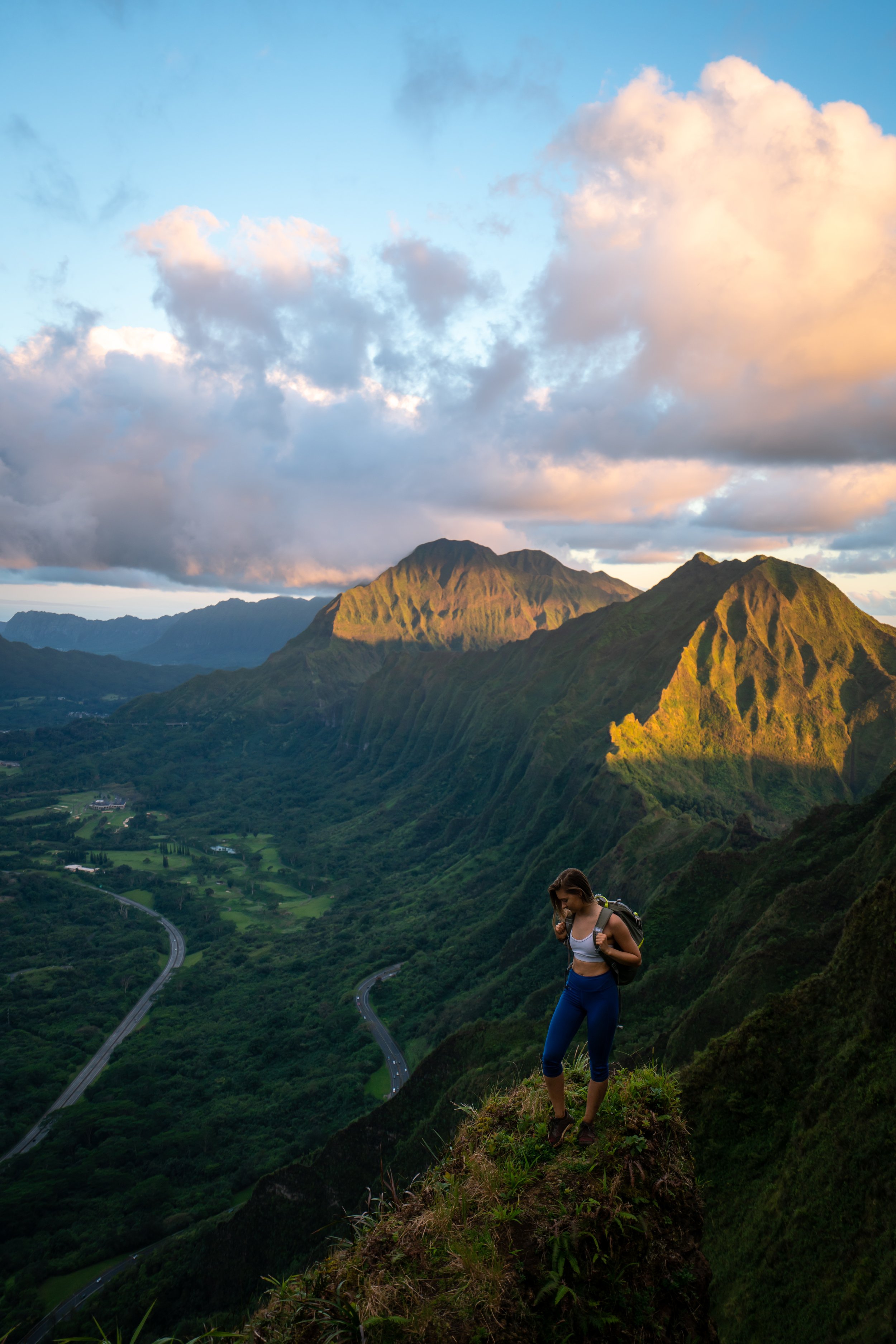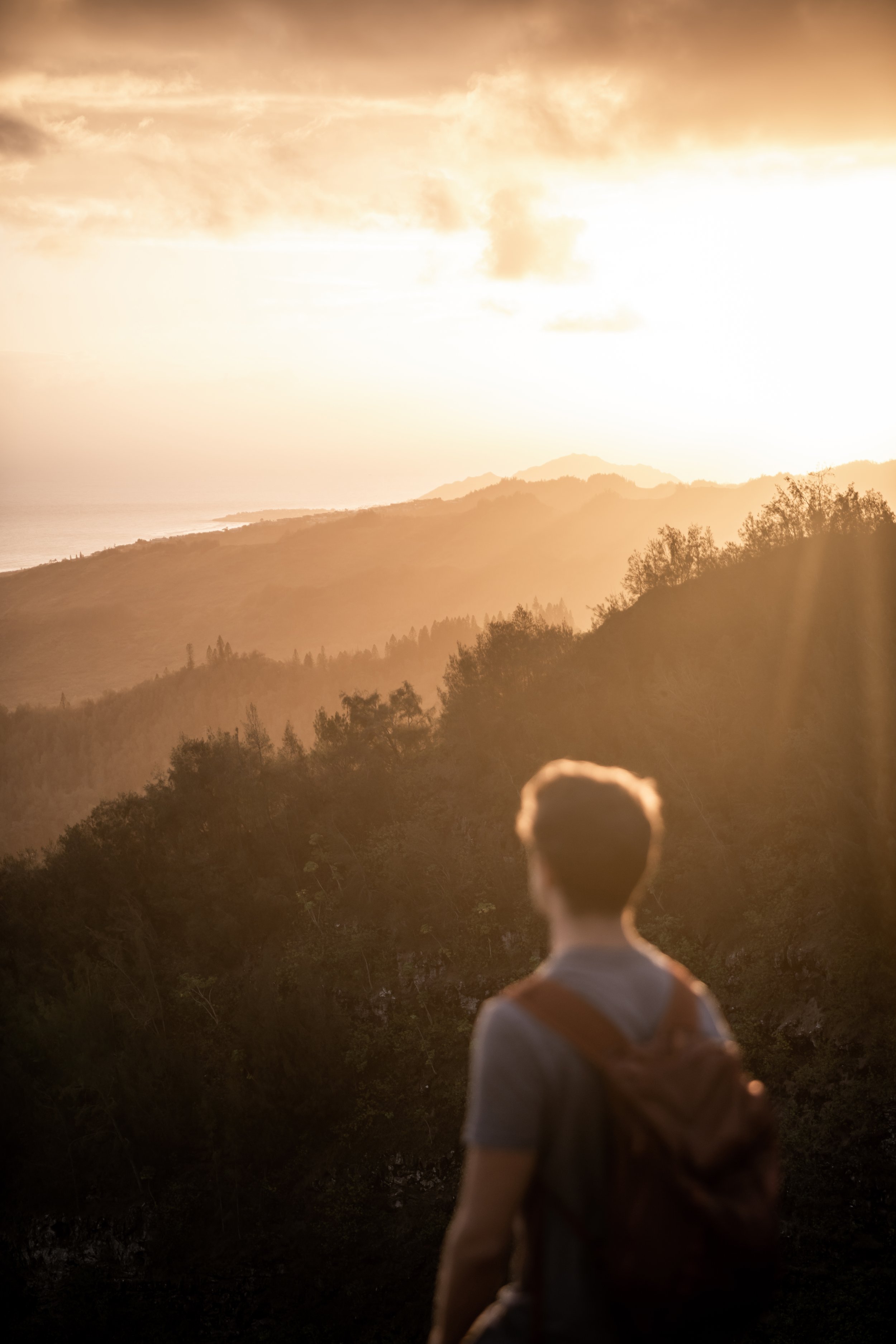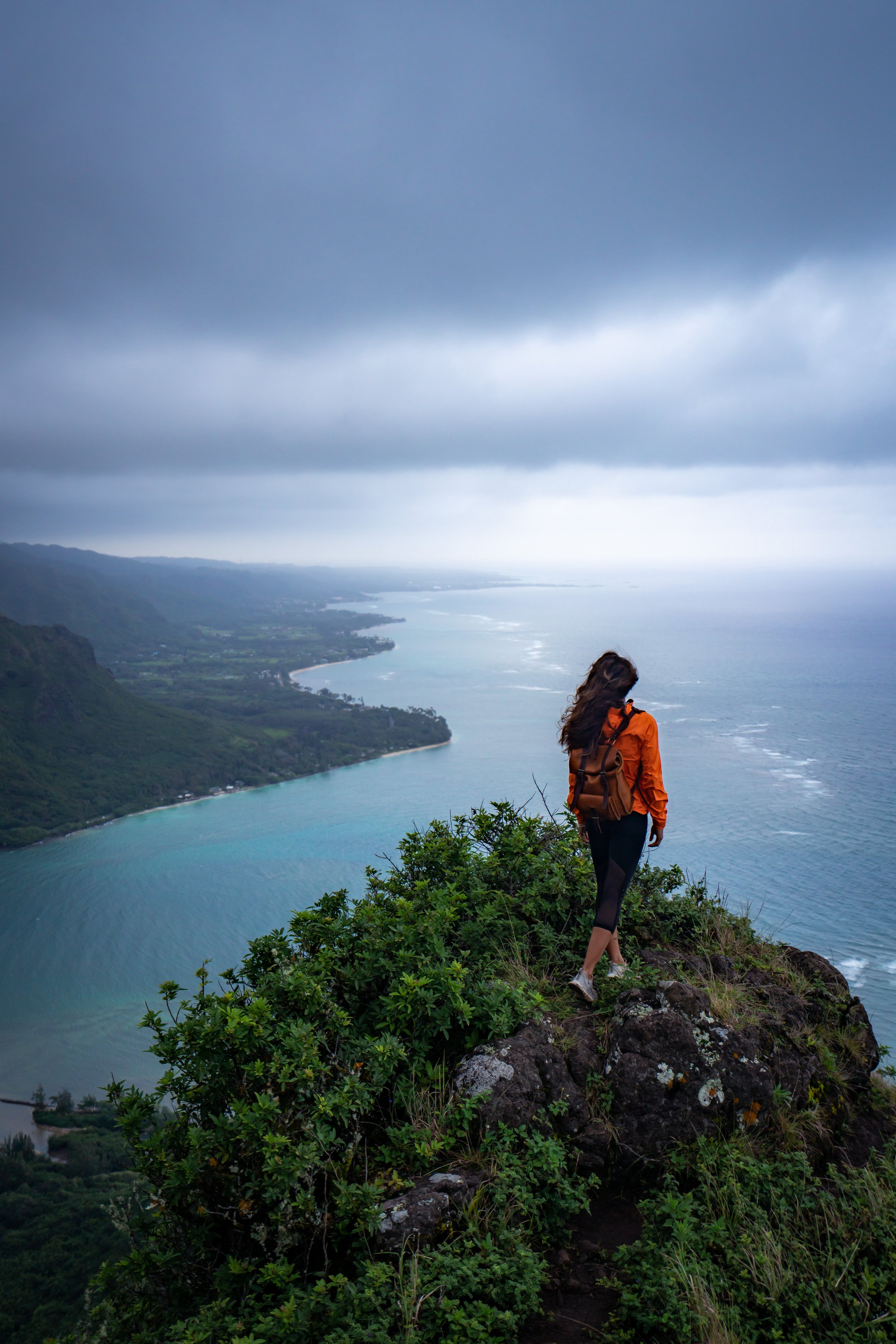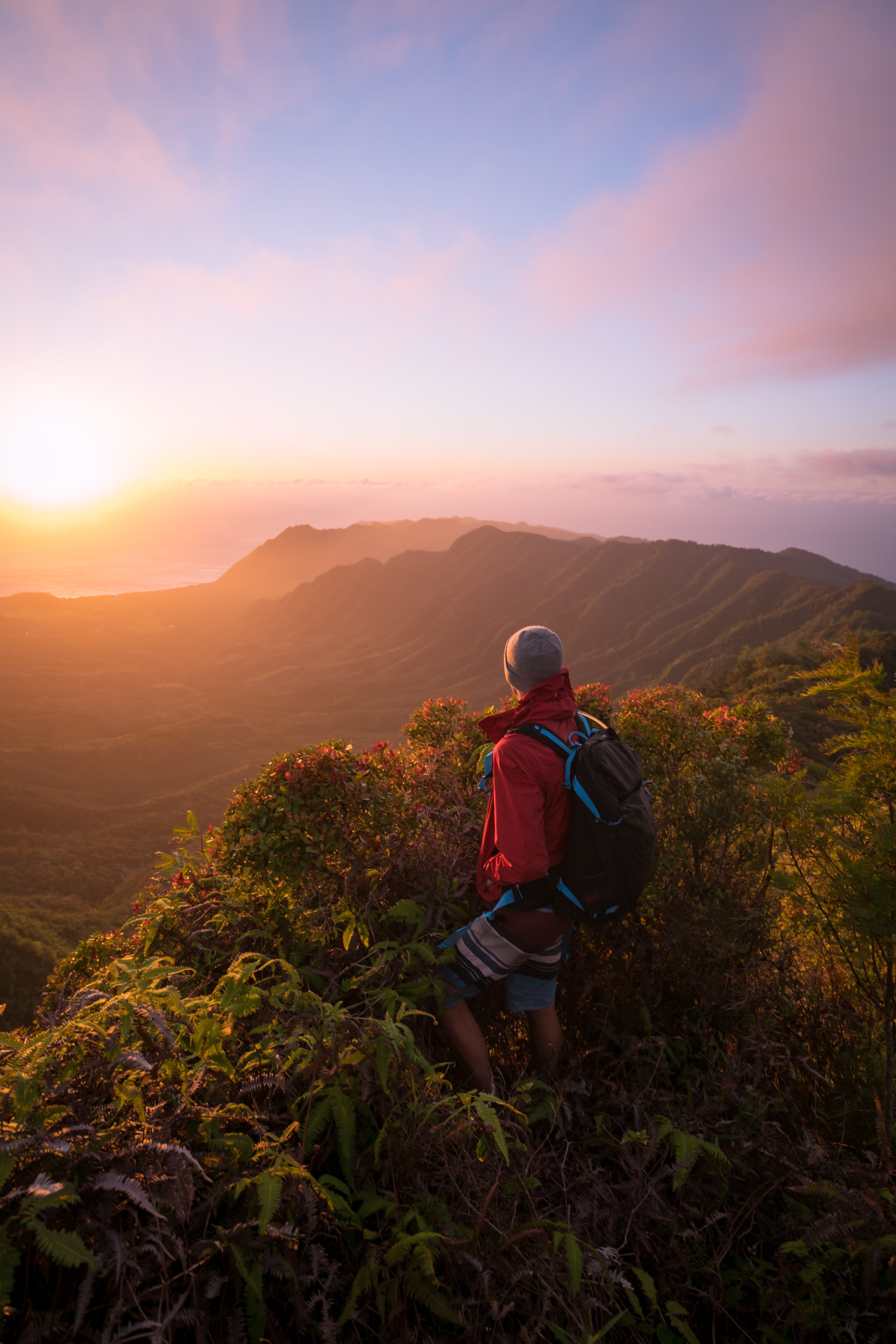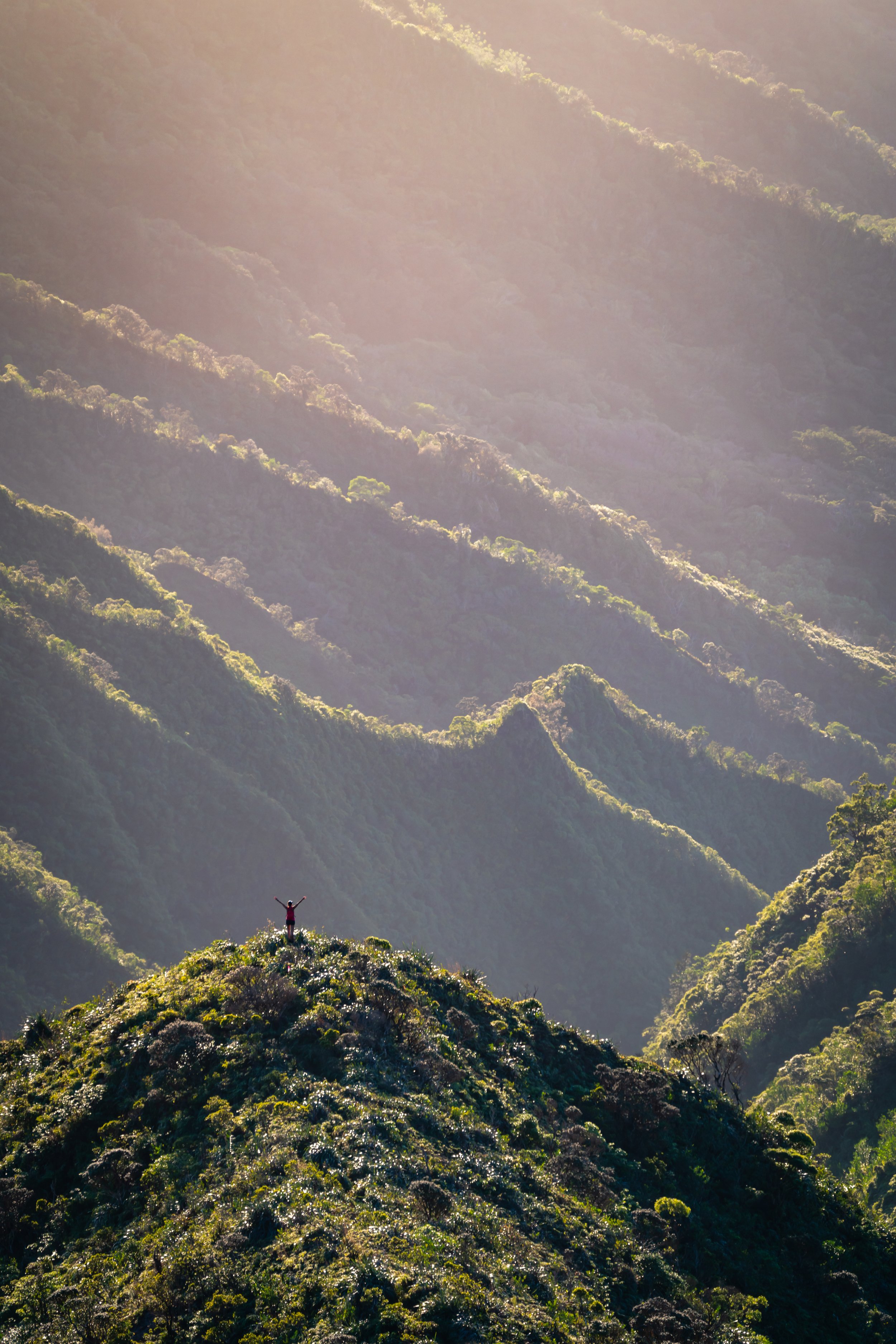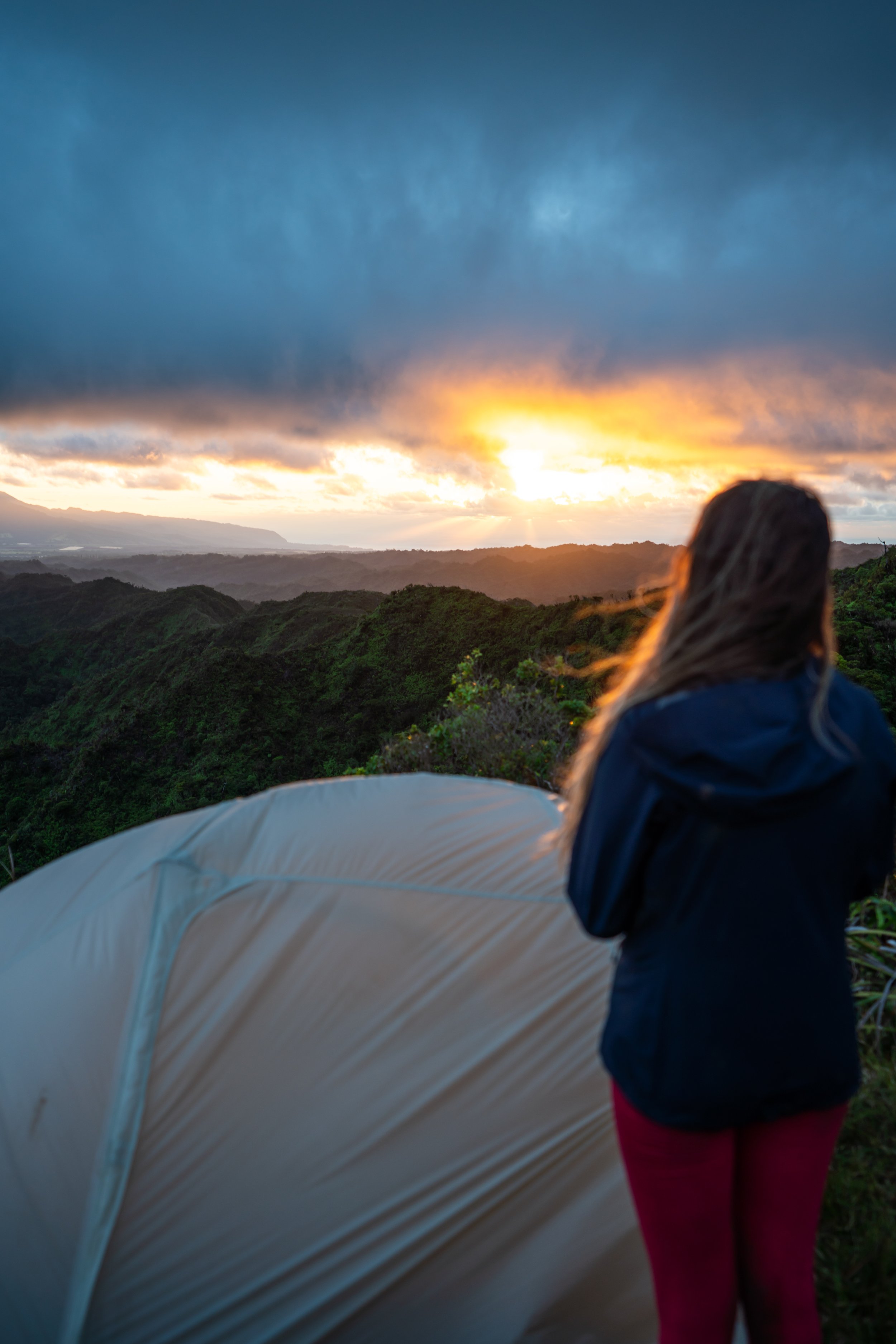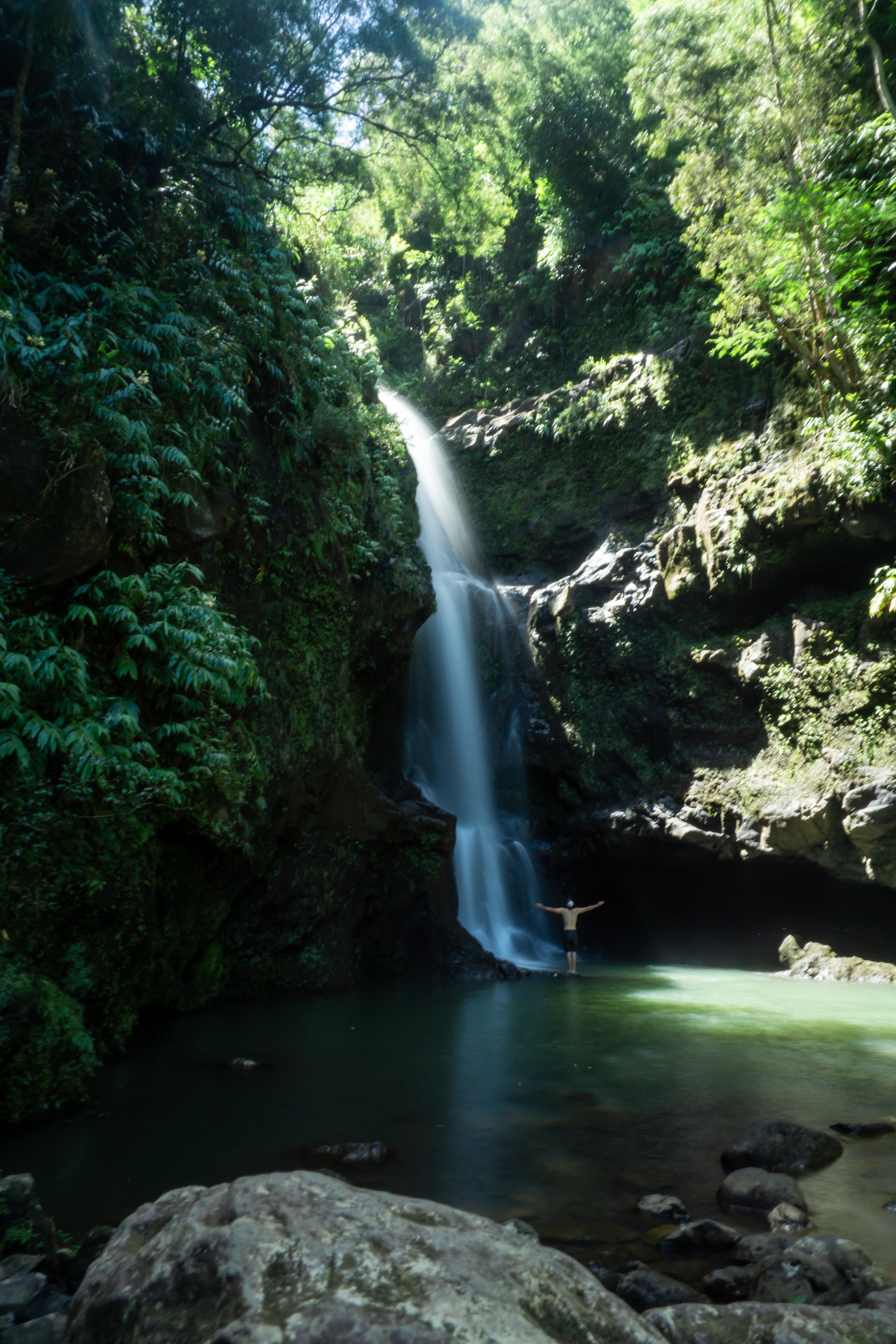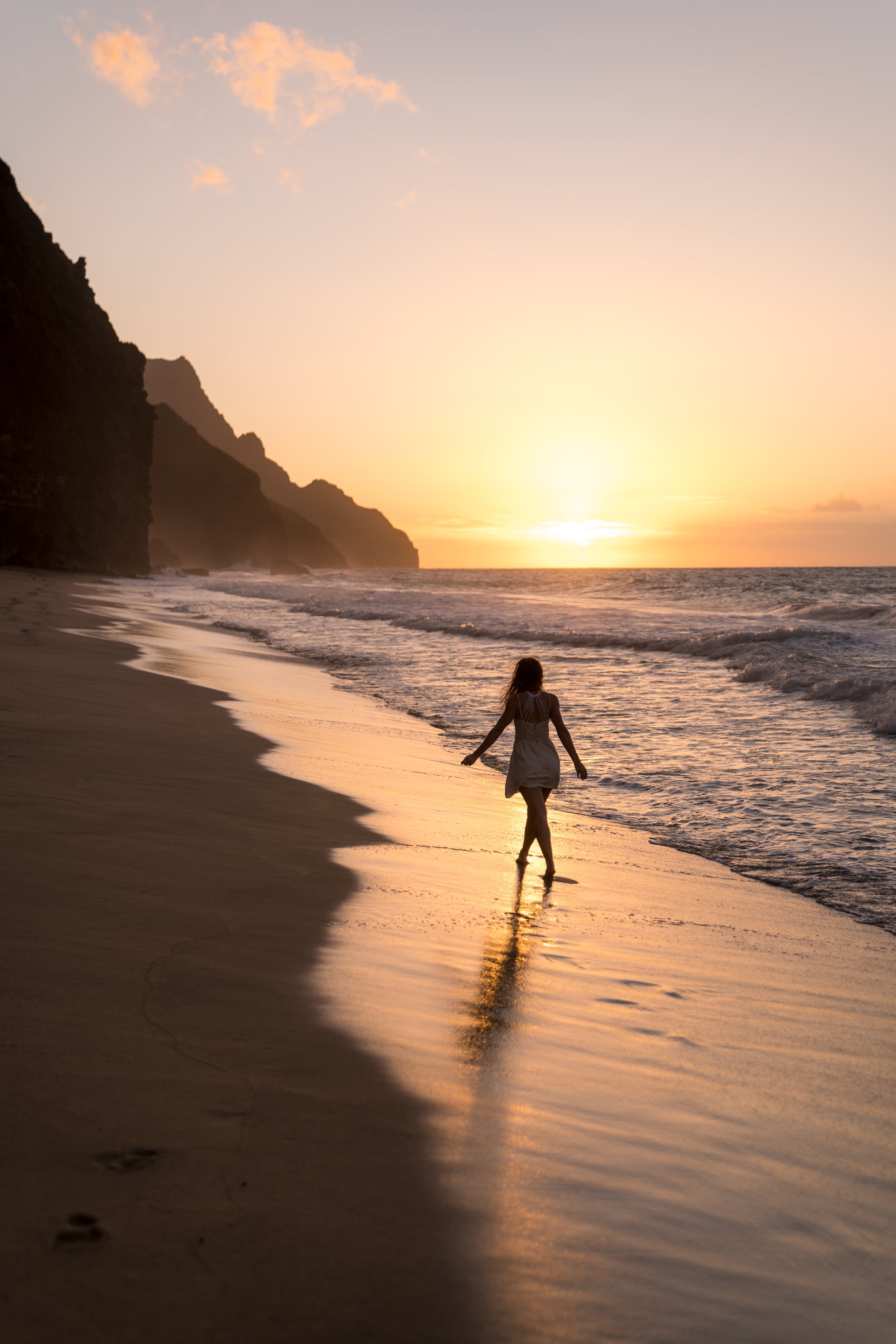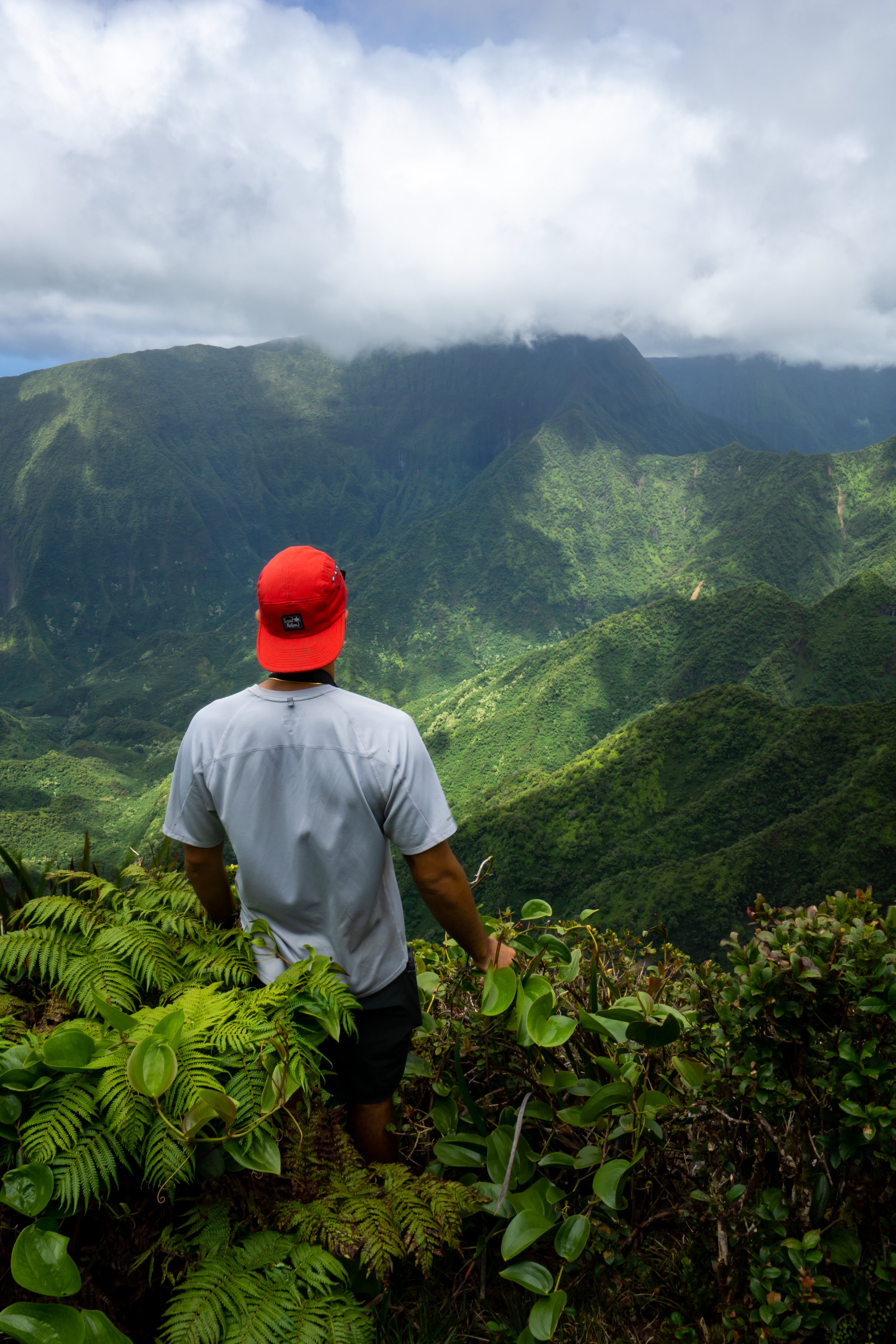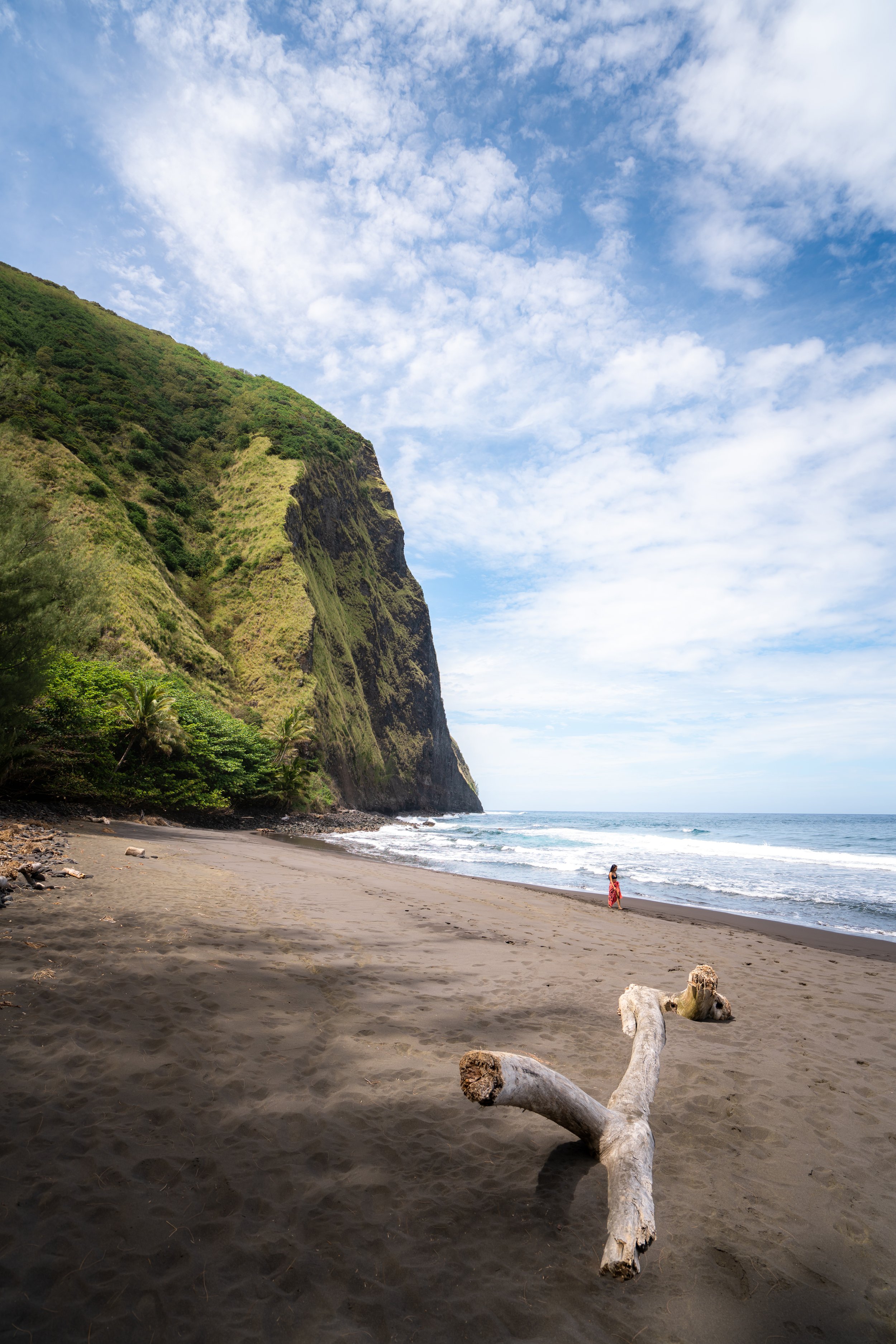Hiking the ʻAiea Ridge Trail to Stairway to Hell on Oʻahu, Hawaiʻi
Distance (Roundtrip): 11.6 miles / 18.7 km
The ʻAiea Ridge Trail in the central Koʻolau Mountains on Oʻahu is most commonly associated with the 'nearby' Stairway to Hell.
By this, I mean that most hikers don’t simply hike ʻAiea Ridge without continuing further to Stairway to Hell.
Furthermore, almost everyone is familiar with the infamous Stairway to Heaven, but, in my opinion, the lesser-known and much more beautiful Stairway to Hell via ʻAiea Ridge, is the better hike!
How to Get to Stairway to Hell on Oʻahu?
While there is more than one way to hike to the north Haʻikū Stairs, including ʻAiea Ridge, Hālawa Ridge, and the Moanalua Saddle via Kulanaʻahane, in this post, I talk about the best route, which is the ʻAiea Ridge Trail.
I say this because if you’ve ever hiked any Oʻahu saddle completely, you would know that they are nothing to take lightly, and they are not something that you want to attempt with a heavy overnight bag.
My Hawaiʻi Hiking Checklist
Obviously, for camping, you will need general backpacking gear. For this reason, I wrote a separate post about what backpacking gear is worth the money, from my experience, and what the best alternatives are to save you money.
Read My Separate Post: Best Ultralight Backpacking Gear
In addition, here is a complete list of must-have things that you will want for any hike on Oʻahu.
Osprey 3L Water Bladder - The Osprey 3L water bladder is the most universal hiking and backpacking water bladder on the market, and it’s my go-to because of the slide-off seal that allows it to be quickly filled from the top. Additionally, individual parts are easily replaceable, such as the bite valve.
Blister / Heel Protectors - I swear by these cheap, amazing heel protectors to prevent blisters for nearly every kind of hiking and backpacking that I do!
Black Diamond Headlamp - Personally, I recommend the Black Diamond Storm because it is one of the brightest, lightest, and longest-lasting headlamps on the market—and trust me, the weight-to-battery-life ratio really does matter!
Hiking / Trail Running Shoes - Depending on the type of trail, I prefer to use either the Keen Targhee for longer, more rugged hiking or the HOKA Zinal Trail-Running Shoe for lighter, less intense trails. In either case, both have been amazing to me for many years across countless environments, and both can be found in men’s and women’s sizes. - (Men’s Keen / Women’s Keen) (Men’s HOKA / Women’s HOKA)
Waterproof Rain Shell - You never know when it may rain, and I’ve learned over the years that a rain shell is far better than a rain jacket. By this, I mean that it’s best to have something that the water will roll right off of, which is why I recommend the Patagonia Torrentshell 3L available in both men’s and women’s sizes.
High SPF Sunscreen - Packing high-SPF sunscreen is a must for long days outside!
ʻAiea Ridge Trailhead Parking
If you’re planning on an overnight hike, don’t park your car at the ʻAiea Loop Trailhead. There are signs warning that you may be ticketed and towed.
To get around this, park just outside of the gate for the Keaʻīwa Heiau State Recreation Area on one of the residential streets.
In my opinion, it’s best to drive everyone to the trailhead, then have one person head back down to park the car and walk up.
Google Maps Directions: ʻAiea Loop Trailhead
Hiking the North Haʻikū Stairs
Beginning from the ʻAiea Loop Trail, the entire hike is roughly 11.6 miles (18.7 km) roundtrip and should be completed in at least two days for a much more enjoyable experience.
That being said, 11.6 miles (18.7 km) may not sound like much to some, but camping is always a better choice in order to have the opportunity to watch the sunset and sunrise from the stairs.
However, if you plan for two days, you now have to factor in more food, at least 5-6L of water per person at a minimum, and a tent to sleep in. Also, don’t count on a hammock because there are no trees!
To get to ʻAiea Ridge, start by hiking the upper half (north side) of the ʻAiea Loop Trail. If you make the mistake of taking the lower trail, you will still reach ʻAiea Ridge; it will just take a little longer.
ʻAiea Ridge Junction (Puʻu ʻUaʻu)
At about 1.6 miles (2.6 km) into the hike, the Upper Half of the ʻAiea Loop Trail reaches the beginning of the Lower Half, which is where the real ʻAiea Ridge Trail begins.
It’s here that you will start to see views of the H-3 freeway, which is always a nice sign that you’re on the correct route.
ʻAiea Ridge
From here, there's not many places that you can get lost.
By this, I mean that ʻAiea Ridge is the only trail from this point on until you reach the Koʻolau Summit Trail (KST) at the top of the mountains.
As it should probably go without saying, the ʻAiea Ridge Trail, past the ʻAiea Loop, is a hike where pants are necessary.
The pants below are my recommendations that hold up the best with the overgrowth here in Hawaiʻi, but with any hiking pants that need to be durable, make sure that they are at or near 100% nylon. This is really the most important factor!
The closest peak in the photo below is Puʻu Kawipoʻo, and in my opinion, it’s the best spot to take a break on ʻAiea Ridge.
I say this because before the peak, there aren’t many great spots that open up for a nice place to take your pack off.
The first flat area that you will reach at the top of the ridge is not ʻAiea Summit.
The true ʻAiea Summit is about a five-minute or less hike away, past the power line.
ʻAiea Summit
Once at ʻAiea Summit, you will have reached the KST.
From here, you are about 1-2 hours away from Stairway to Hell, depending on your pace.
Read My Separate Post: Koʻolau Summit Trail (KST)
Koʻolau Summit Trail (KST)
From ʻAiea Summit, turn right (south) on the KST toward the H-3 to get to Stairway to Hell. In my opinion, this is the most tedious section of the hike.
To get to Stairway to Hell, you will need to go up and down about four different peaks on the ridgeline, which can be seen in the photo above.
ʻAiea Summit is the peak on the far left, and Stairway to Hell is just below the second little bump on the ridge to the right of the big dip (the dip to the left of the ʻŌhiʻa tree in the bottom of the photo).
This aside, some longtime Oʻahu hikers may remember that it was back in 2015 when a hiker went missing on this section and was never recovered. It happened somewhere between the Mānana Ridge Trail and Stairway to Heaven, and I say to emphasize how important it is to be careful!
Stairway to Hell
When you finally see the H-3 come out of Haʻikū Valley, you’ve made it! There is a perfect grassy meadow to set up camp, and even a little shelter if the weather decides to take a turn for the worst.
The old famous disintegrating stairs are on the ridge descending toward Kāneʻohe right when you get off the final peak.
That being said, I advise you to wear gloves when hiking the stairs because the rusted handrails will literally disintegrate in your hand, and this is the last place that you want to get a bad cut.
Depending on how much it has rained recently, the ground may be very saturated, which is why we set up camp on the concrete pad.
Therefore, in case this ends up being your scenario, I recommend packing a sleeping pad.
Hiking Out (Moanalua Saddle)
Unless you know exactly what you’re getting into on the Moanalua Saddle without a heavy bag, I would strongly advise turning around toward ʻAiea Ridge.
In any case, these are some photos from our hike out on the Moanalua Saddle.
Initially, the stairs from Stairway to Hell continue for a little more than 0.25 miles (0.4 km) past the meadow.
As the trail continues toward and past Hālawa Summit, the KST isn’t too different from the initial sections between ʻAiea Summit and Stairway to Hell.
But then, the Moanalua Saddle becomes significantly more exposed, erroded, and dangerous, making the hiking very tricking from here until the bottom of the saddle at Kulanaʻahane.
Moanalua Saddle (Kulanaʻahane)
This is the bottom of the saddle, where the state-managed Kulanaʻahane Trail meets the Koʻolau Summit.
Kulanaʻahane Trail
If you’re interested in seeing what the rest of the hike through Moanalua Valley looks like on the Kulanaʻahane Trail, I encourage you to check out my separate post.
Read My Separate Post: Kulanaʻahane Trail
Notes for Hiking Stairway to Hell
Don’t park your car within the Keaʻīwa Heiau State Recreation Area. The park will close, and your car may be ticketed and towed. That said, even if you decide to day hike it and your car is still there, you will probably get back after the gate has closed.
Don’t underestimate the amount of food and water that you will need. Always plan for the worst, and hope for the best. There are no reliable water sources on this hike, but you may get lucky at Stairway to Hell if the ground is saturated or in the adjacent drainage. If that’s the case, you will need a water filter.
Lastly, the hike from ʻAiea Loop Trail to the Moanalua Valley Trailhead is 13.5 miles (21.7 km), and it should only be done if you had planned in advance for traversing the Moanalua Saddle. This could also mean packing ropes, as ropes on the KST are replaced far less frequently than on more popular hikes, such as Mt. Olomana.
Native Plants on the Stairway to Hell Trail
Like any upper-elevation trail on Oʻahu, the ʻAiea Ridge Trail and the KST are great places to see a ton of different native Hawaiian plants, which are far less common in other low-elevation areas.
I think my favorite find was this hybrid Kōlea, but others that can be found include ʻIliahi, ʻŌhiʻa lehua, Koa, Alani, Kalia, and Hāhā, to truly name only a few.
If you’d like to learn about these and other native plants from across Hawaiʻi, I encourage you to check out my post that I wrote to help others learn and identify plants from around the islands.
Read My Separate Post: Native Hawaiian Plant Guide
More Oʻahu Adventures
If you’re interested in reading about some more amazing Oʻahu adventures, check out my separate posts below!
Best Hotels & Restaurants in Waikīkī
If you’re trying to decided where to stay on Oʻahu, check out my top 10 list for the best resorts and restaurants in Waikīkī.
I break down what makes one hotel a better choice over another, so that you can find the best fit for your stay on the island.
Read My Separate Post: Best Waikīkī Hotels & Restaurants
HNL Airport-Hotel Shuttle
Prices on ride-share apps like Uber/ Lyft cannot beat the price of booking your hotel shuttle prior to arrival. I say this because there are additional fees for ride-share airport pick-ups at Honolulu Airport (HNL), which is why I recommend booking your transportation in advance using the options below.
Additionally, the last option below will go as far as the Ko ʻOlina Resorts on the West Side and Turtle Bay on Oʻahu’s North Shore!
Best Way to Book Rental Cars!
I travel quite a bit, and I know firsthand that finding a good rental car deal can be a challenge, but that’s why I recommend comparing all of your options with Discover Cars.
In short, Discover Cars is a well-known, reputable business that allows you to search for the best deal across companies, and they have the best full-refund cancellation policy I’ve ever seen, valid up to 72, or sometimes even 48, hours prior to your reservation!
Book Here: Discover Cars
Visiting Other Islands
If you are visiting Oʻahu or heading to another island, check out some of my personal recommendations for Oʻahu, Maui, Kauaʻi, Molokai, Lānaʻi, and Hawaiʻi Island (Big Island) in these separate posts.
If you’re trying to decide which island is right for your visit, check out my overview about each island in the post below.
Read My Separate Post: What is the Best Hawaiian Island to Visit?
What is the Best Time of Year to Visit Hawaiʻi?
The weather in Hawaiʻi can often appear to be warm and beautiful throughout the year, but in my experience, there is a lot more to consider when planning what time of year to visit the islands, such as what island you are considering, what sides of each island do you plan to stay, what activities are you most interested in, the wildlife, and countless other nuanced variables that can all impact the type of trip you can expect to have.
For these reasons, I highly recommend reading through my separate article to not only understand my thoughts regarding the best time of year to come to Hawaiʻi but also what you need to consider based on the time of year that you plan to visit.
Read My Separate Post: What is the Best Time of Year to Visit Hawaiʻi?
10 Best Tours & Excursions on Oʻahu
There are a lot of different tour options to choose from on Oʻahu, but to make it easier to decide, I made a list of my favorite tours because some things simply are better with a local guide!
Read My Separate Post: Best Tours on Oʻahu
Safety
All hikes in Hawaiʻi should not be compared to trails outside of the islands, and hikers should exercise due caution on every adventure, given that many are extremely dangerous.
By this, I mean that Hawaiʻi is known for hot, humid weather, steep, dramatic, and unstable cliffs, and flash floods, which can occur without warning. Therefore, it is important that you check the local forecast, understand the physical condition of your entire group, and pack sufficient food and water before attempting any hike.
Disclaimer
All information provided on this blog is for informational purposes only and is not intended to be a substitute for information or advice from qualified professionals or managing agencies.
Noah Lang Photography LLC makes no representations or warranties regarding the accuracy or completeness of the information provided here, and readers should use their own discretion, judgement, and seek professional advice where it is appropriate.
Furthermore, Noah Lang Photography LLC shall not be held responsible for any injuries, lost individuals, or legal issues arising from the use of information provided on this website, and if applicable, the above safety disclaimer should be referenced to provide a generic overview of the risks involved.
All said, the content on this blog is for the sole use of Noah Lang Photography LLC, and unauthorized use or reproduction of this content is strictly prohibited.
Disclosure
This post is not sponsored.
However, some of the links in this post are affiliate links, which means that I may earn a small commission if a purchase is made through one of those links. This commission comes at no additional cost to you, and I only recommend products that I personally use and believe will add value to my readers. Thank you for your support, which enables me to continue creating more!
To read the full privacy policy, click here.

About This Blog
Noah Lang Photography, also known as @noahawaii, is 100% reader-supported!
I do not accept guest articles or sponsored content of any kind on my blog, which is why, if you enjoy the outdoor and travel content I create, please consider buying me a coffee!
I appreciate your support, which helps me continue to keep this blog alive!










